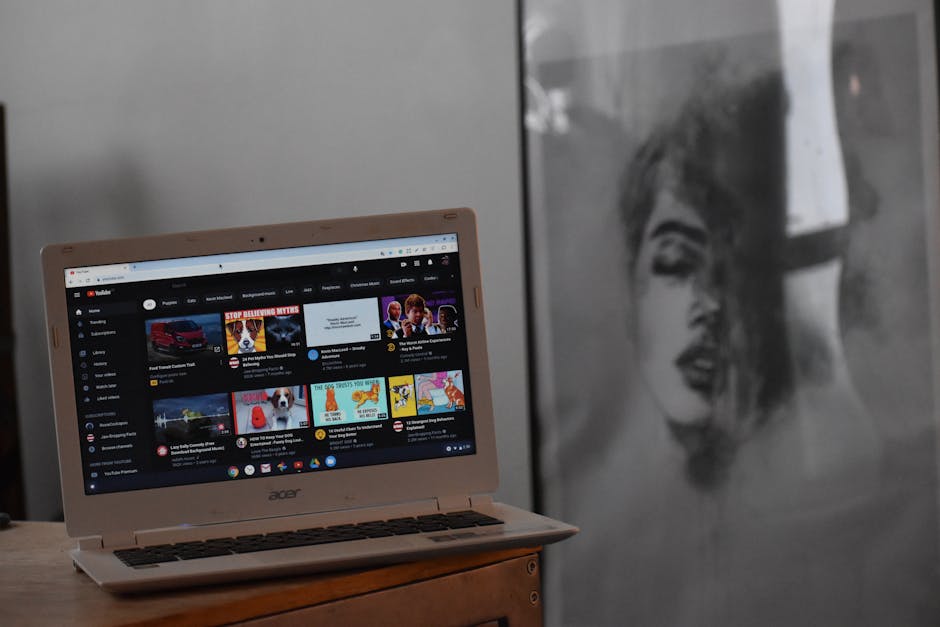Can You Reuse YouTube Videos on Your Website Legally?

Can You Reuse YouTube Videos on Your Website Legally?
Did you know that over 500 hours of video are uploaded to YouTube every minute? That’s like trying to drink from a fire hose! With so much content out there, it’s tempting to think you can just grab a few videos and sprinkle them on your website like confetti. But hold your horses! Before you dive into the world of video reuse, let’s explore the legal waters of using YouTube videos on your site.
Understanding Copyright Basics
Copyright is the gatekeeper of creativity. It protects the original works of authors, artists, and yes, even YouTubers. When someone uploads a video, they automatically hold the copyright to that content. This means you can’t just take their hard work and slap it on your website without permission. Think of it like borrowing a friend’s favorite book without asking. Not cool, right?
Embedding vs. Downloading
Here’s where things get interesting. YouTube allows you to embed videos on your website. This is like inviting a friend to your party without taking them home with you. You’re sharing the fun, but the video still lives on YouTube’s turf. Embedding is legal and perfectly acceptable as long as you use the provided embed code. Just click the “Share” button under the video, select “Embed,” and voilà! You’re good to go. 🎉
On the flip side, downloading a YouTube video and uploading it to your site? That’s a big no-no. It’s like stealing your friend’s book and claiming you wrote it. Not only is it illegal, but it can also lead to your website getting a nasty takedown notice. Yikes!
Creative Commons Licenses
Some YouTube videos come with a Creative Commons license. This is like a golden ticket that allows you to reuse the content under certain conditions. If you find a video with this license, you can use it as long as you give proper credit to the creator. It’s a win-win! Just make sure to read the specific terms of the license, as they can vary. Some may allow modifications, while others may not.
Fair Use: The Wild Card
Ah, fair use—the legal gray area that makes copyright law so intriguing. Fair use allows limited use of copyrighted material without permission for purposes like criticism, comment, news reporting, teaching, or research. But don’t get too excited! Fair use is not a free pass. Courts consider several factors:
- The purpose and character of your use: Is it commercial or educational?
- The nature of the copyrighted work: Is it factual or creative?
- The amount and substantiality of the portion used: Are you using a tiny clip or the whole video?
- The effect of the use on the market: Does your use harm the original creator’s potential earnings?
Using a short clip for commentary might fall under fair use, but using an entire video for profit? That’s a slippery slope. ⚠️
Getting Permission: The Best Approach
If you’re unsure about the legality of using a video, the safest route is to ask for permission. It’s like asking your friend if you can borrow their book. Most creators appreciate the respect and may even be flattered! Just shoot them a message through their social media or email. You might be surprised by how many are open to collaboration. 🤝
Case Studies: Learning from Others
Let’s look at a couple of real-world examples. A popular blog about travel used a stunning drone video from a YouTuber who specializes in aerial footage. They reached out, got permission, and even linked back to the original video. The result? Increased traffic for both parties and a happy creator who gained new subscribers!
On the other hand, a small business decided to download a viral video without permission and post it on their site. They received a takedown notice from YouTube and faced potential legal action. Lesson learned: always play it safe!
Best Practices for Using YouTube Videos
Now that you’re armed with knowledge, here are some best practices to keep in mind:
- Always embed videos: It’s legal and easy!
- Check for Creative Commons licenses: They can be your best friend.
- Consider fair use carefully: Don’t push your luck.
- Ask for permission: It never hurts to ask.
- Give credit: Always link back to the original creator.
Conclusion
Reusing YouTube videos on your website can be a tricky business. But with the right knowledge, you can navigate the legal landscape like a pro. Remember to embed, check licenses, and when in doubt, ask for permission. By respecting creators’ rights, you not only stay on the right side of the law but also build a community of collaboration and respect. So go ahead, share those videos—just do it the right way! 🚀




